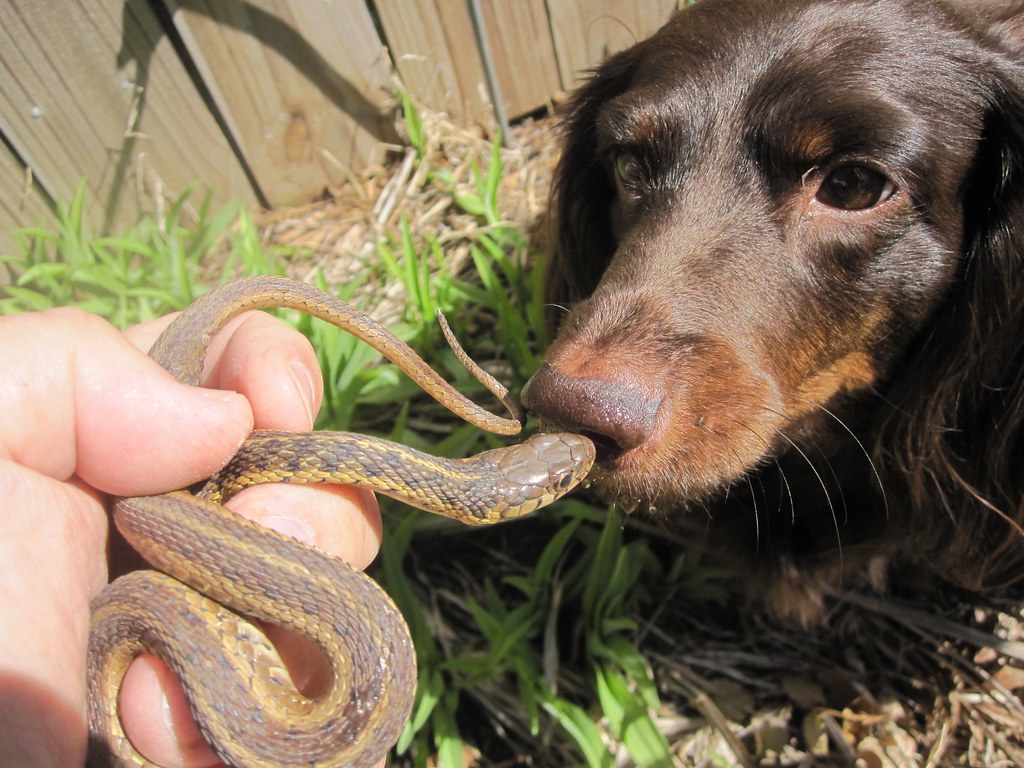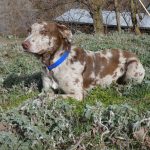Summary:
For dog owners in snake-prone areas, the outdoors can be risky. Curious dogs may accidentally encounter venomous snakes like rattlesnakes, cobras, or vipers, leading to severe injuries or even fatal bites. Snake avoidance training offers a proactive solution by teaching dogs to recognize and avoid these reptiles.
Using controlled, safe exposure, dogs learn to identify the snake’s scent, appearance, and warning sounds, ensuring they respond by moving away and alerting their owner. This training reduces the risk of bites, ensures your dog’s safety, and gives you peace of mind during outdoor adventures. Prioritize your dog’s protection today!
For dog owners living in areas where snakes are common, the outdoors can pose a hidden danger. Dogs are curious and adventurous by nature, so they may inadvertently come too close to these venomous reptiles, leading to potentially life-threatening encounters.
Snake avoidance training offers a proactive solution, teaching dogs to recognize and steer clear of venomous snakes, especially the rattlesnakes. This training not only protects your furry friend but also provides peace of mind, making your outdoor activities safer and more enjoyable.
Table of Contents
Why Snake Avoidance Training is Crucial
Living in areas with snakes presents a significant risk for dogs. Dogs often explore unfamiliar sounds, smells, and movements, which can lead them directly to a dangerous encounter with a venomous snake such as a cobra, viper, or rattlesnake. A snake bite can cause severe injuries or even be fatal. Snake avoidance training can protect your dog, reduce the risk of bites, and spare you the worry and expense of emergency veterinary care.
What is Snake Avoidance Training?
Snake avoidance training is a specialized method that teaches dogs to recognize and stay away from venomous snakes. This training involves controlled and safe exposure to live snakes that have been made harmless, either by removing their fangs or using protective muzzles. Trainers use these encounters to teach dogs to identify the snake’s unique scent, appearance, and sound, and to react by moving away and alerting their owner.
Key Components of Snake Avoidance Training
Recognizing the Scent:
Dogs are introduced to the distinct smell of a snake, often using snake skins or scent glands. This helps them identify a snake even when it’s not visible.
Visual Identification:
Trainers teach dogs to recognize the physical characteristics of a snake, such as its color patterns, coiled posture, and movement.
Listening for Warning Sounds:
The sound of a snake’s rattle is an important warning signal. Dogs learn to associate this sound with danger and respond by moving away.
Behavioral Conditioning:
Through repetition and reinforcement, dogs are trained to react consistently when they encounter a snake. This may involve using a vibration collar or other gentle aversive stimuli to solidify the connection between the snake and the need to avoid it.
Benefits of Training
Safety for Your Dog: A trained dog is less likely to approach a snake, reducing the risk of a bite.
Peace of Mind for Owners: Knowing your dog understands how to avoid snakes can make outdoor activities more enjoyable and less stressful.
Human Safety: In some cases, trained dogs can alert their owners to a nearby snake, preventing potential harm to people as well.
Finding the Right Trainer
Choose a trainer with experience in venomous snake avoidance techniques. Look for professionals who use humane methods and have positive reviews. It’s essential that the training environment prioritizes both the safety of the dog and the snakes used in the sessions.
Average Training Cost
The cost of snake avoidance training for dogs varies based on location, trainer expertise, and the training methods employed. Below is an overview of typical pricing in the United States and Australia:
United States:
Southeastern Reptile Rescue (Georgia): Offers snake aversion training at $60 per dog.
Colorado Gun Dog Association (Colorado): Charges $80 per dog for their snake avoidance course.
Rattlesnake Ready (Arizona): Prices of single-dog appointments are $200, with discounts for additional dogs.
Dogz Inc (California): Provides on-location training starting at $1,250 plus travel costs, accommodating up to 10 dogs per session.
Australia:
Padfoot Animal Behaviour (New South Wales): Offers snake avoidance training classes at $699 per dog.
Snake Avoidance Training for Dogs (Various Locations): Charges $240 for initial training sessions, typically lasting around 30 minutes.
Deb’s Dog Training (Gloucester): Prices snake avoidance training at $120 for one person and one dog, with discounts for multiple dogs.
These examples illustrate that in the U.S., prices can range from $60 to over $1,250, depending on the provider and training specifics. In Australia, costs generally range from $120 to $699 per session. It’s advisable to contact local trainers to obtain accurate pricing tailored to your specific needs and location.
Additional Safety Tips
Even with training, owners should take extra precautions when in snake-prone areas:
- Always keep your dog on a leash during hikes or walks in the wilderness.
- Avoid tall grass, brush, and rocky areas where snakes might hide.
- Learn basic first aid for snake bites and carry an emergency vet’s contact information.
- Consider using snake-proof fencing in your yard if you live in an area with a high snake population.
How to Respond to a Snake Bite
Despite your best efforts, accidents can happen. If your dog is bitten by a venomous snake:
- Stay calm and try to keep your dog still to slow the spread of venom.
- Avoid using ice, tourniquets, or attempting to suck out the venom.
- Seek veterinary care immediately. Call ahead to let them know you’re on the way.
Final Thoughts
Snake avoidance training is an investment in your dog’s safety and well-being. By teaching your dog to recognize and avoid these dangerous reptiles, you can enjoy outdoor adventures with greater confidence. When combined with vigilant habits and preparedness, this training ensures a safer experience for both you and your furry companion.










